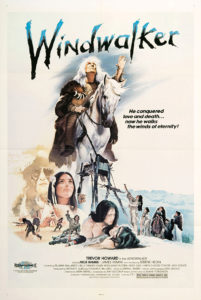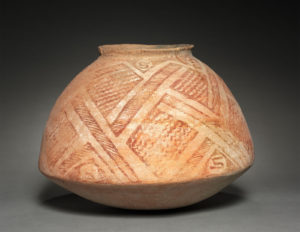Table of Contents
Native Americans in the Movies
 |
In the animated Spirit: Stallion of the Cimarron (2002), Spirit – a wild horse – is captured and taken to an army fort, where the resident Colonel does his best to break him. A young Lakota prisoner, Little Creek, and Spirit manage to free themselves – and Spirit is taken to the Lakota camp, where he falls for Little Creek’s horse, Rain. A lot of excitement follows before the happy ending. Rated G. |
 |
In Windwalker (1980), set in Utah in 1797, an aged Cheyenne warrior helps fight off a raiding party of rival Crow; and, through flashbacks, tells the story of his life. Other than voice overs, the film is spoken in the Cheyenne and Crow languages, with English subtitles. Rated PG. |
 |
Jeremiah Johnson (1972) is loosely based on the story of mountain man John Jeremiah Johnston – a.k.a. Liver-eating Johnston – though luckily without the more horrific aspects of the real Johnson’s life. In this story, Jeremiah (Robert Redford), after leaving the army, heads west for a life of solitude as a mountain man. There – after the U.S. Cavalry forces him to lead them through a sacred burial ground – he stumbles into a vendetta with the Crow. But there’s a lovely ending. Rated PG. |
 |
Dances with Wolves (1990) is spoken of as a watershed for Native Americans in the movies, one of the first to attempt in-depth portrayals of Native American characters and culture – and to hold a good portion of the dialogue in Lakota, with English subtitles. The story is that of Civil War lieutenant John Dunbar, next assigned to the western frontier, where he befriends a local Lakota tribe who give him the name “Dances with Wolves.” Dunbar adopts the lifestyle and customs of the tribe, but trouble arises when the U.S. Army arrives and Dunbar is captured and ordered executed as a deserter. Rated PG-13. |
 |
Little Big Man (1970) traces the life of Jack Crabb (Dustin Hoffman), a 121-year-old man whose family was killed by the Pawnee when he was ten years old. He’s rescued and adopted by the Cheyenne (long-time enemies of the Pawnee) – and from then on is torn between the worlds of the Native Americans and that of the invasive whites. Rated PG-13. |
 |
Reel Injun (2009), created by Cree filmmaker Neil Diamond, is a documentary about the portrayal of Native Americans in the movies, from the age of silent film to the present day. Recommended for ages 15 and up. See the accompanying teacher’s guide. |
 |
From PBS’s The American Experience, We Shall Remain (2009) is a five-part overview of 300 years of Native American history from an indigenous point of view. Episode titles are “After the Mayflower,” “Tecumseh’s Vision,” “Trail of Tears,” “Geronimo,” and “Wounded Knee.” |
Arts, Crafts, Activities
See Native American History (above) for Anita Yasuda’s Explore Native American Cultures! and Yvonne Wakim Dennis’s A Kid’s Guide to Native American History, both of which pair historical and cultural information with hands-on projects and activities.
|
Native Tech is a website devoted to Native American technology and art, with separate categories for Beads and Beadwork, Birds and Feathers, Clay and Pottery, Stonework and Tools, Weaving and Cordage, and more. |
|
 |
The Denver Art Museum has a vast collection of Native American art, consisting of over 18,000 pieces by artists from over 250 indigenous nations. Browse the collection here. |
|
From Khan Academy, see Terms and Issues in Native American Art, a well-done kid-friendly article on stereotypes, sacred art, repatriation, and problematic terminology. |
|
 |
See Native American Art from the Metropolitan Museum’s Heilbrunn Timeline of Art History. |
